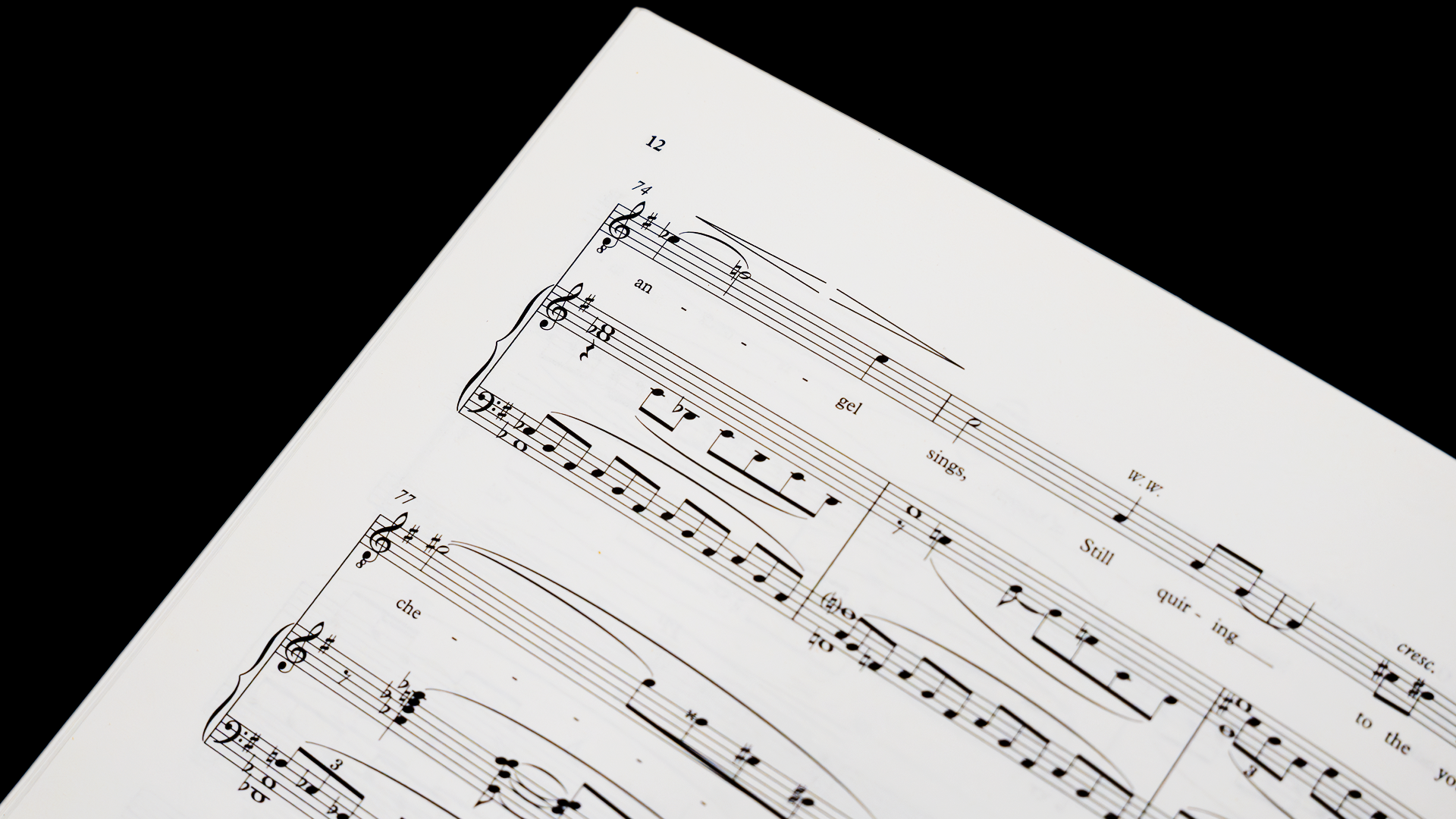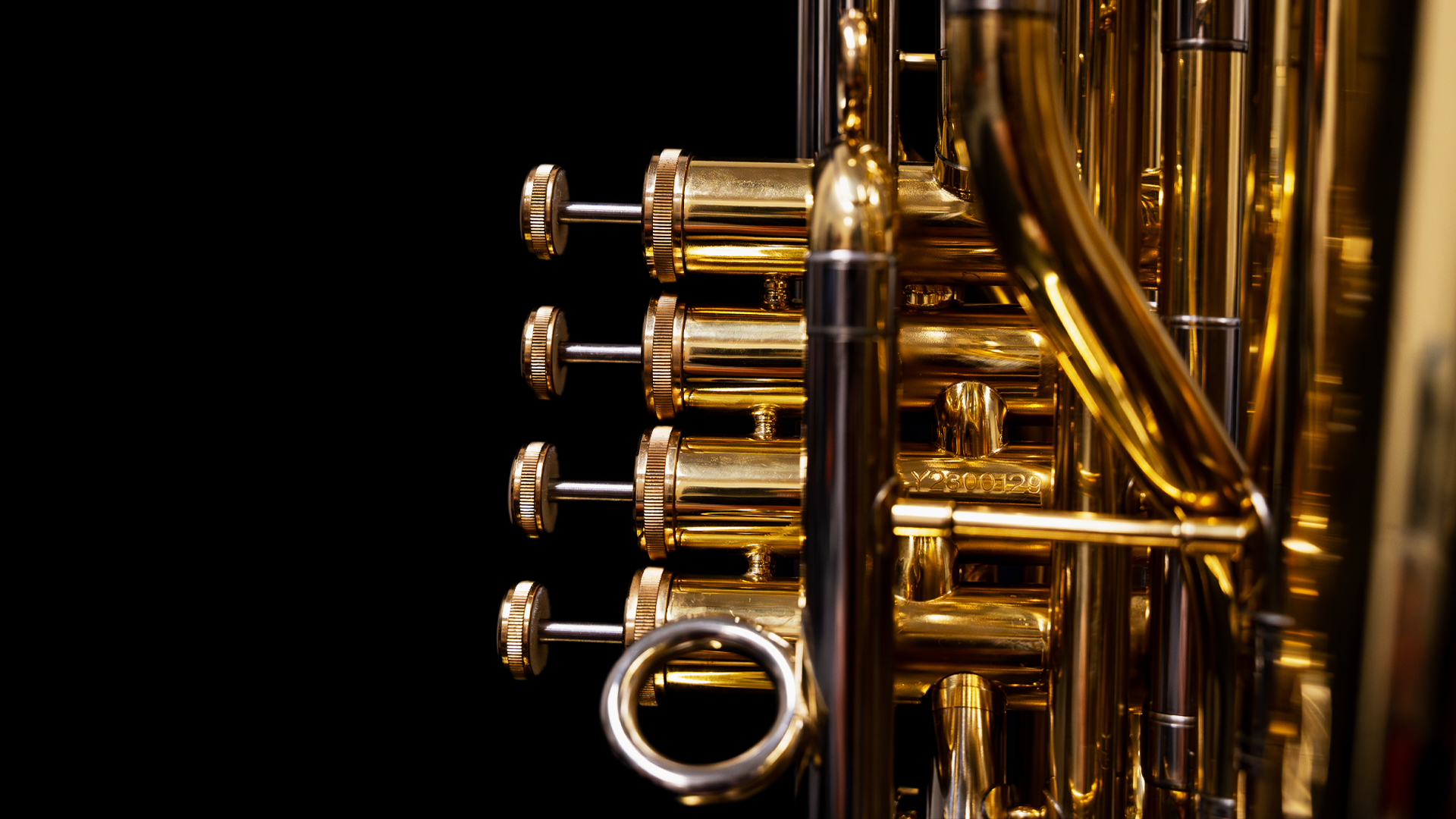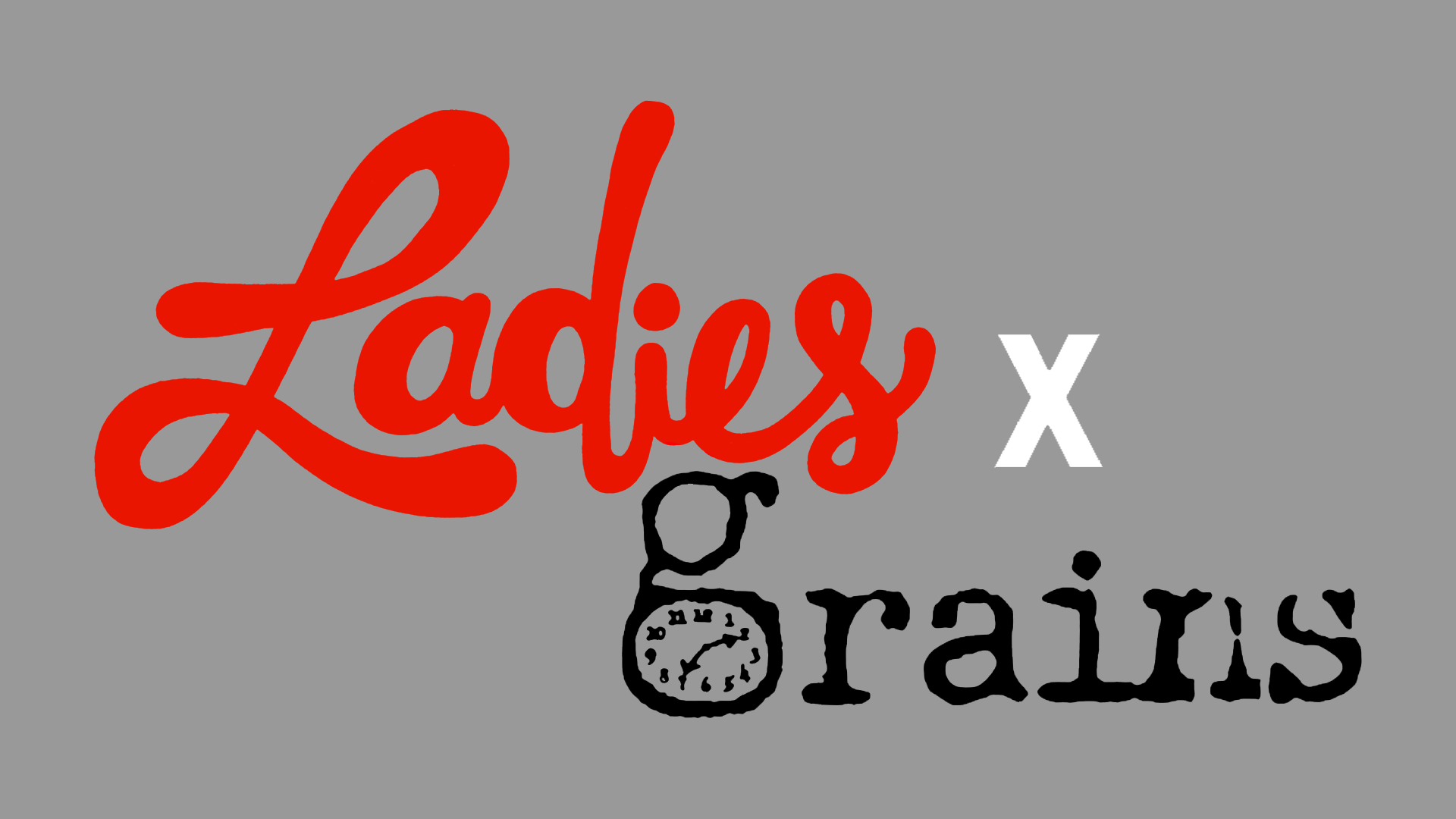NC State Department of
Performing Arts and Technology
presents
PERSISTENCE
NC State Choral Artists
With The NC State Chorale
Nathan Leaf, conductor
Tom Koch, pianist
Performance Overview
Jump to a specific spot in the program.
CONCERT WELCOME AND INTRODUCTION
“The storm tones died away, and turning toward the east, I beheld the trees, hushed and tranquil. The setting sun filled them with amber light, and seemed to say….
…Come to the woods, for here is rest.“
“May the source of strength who blessed the ones before us help us find the courage to make our lives a blessing. And let us say, Amen.“
What can we learn from the trees? They exist. They persevere through the seasons, through the ups and downs of wind, rain, heat, and cold. They provide. They give shade, shelter, fuel, fruits, and seeds. They bear marks from their past…marks that tell us part of their story. They mark time internally. They figure out how to handle the obstacles they encounter. They grow and thrive over them, around them, and sometimes right through them, incorporating those obstacles into their very selves. Sometimes they benefit from a little help, sometimes all they need is time. They persist.
The music tonight is about finding our way through challenges: personal, societal, ecological. How can we be like the trees?
PROGRAM
The concert will be presented without an intermission. There will be musical interludes performed between each of the choral works to allow audience members a brief time for reflection. We ask you to please hold your applause until the end of the concert.
Select a title for more information.
A Snapshot of the NC State Center for Human Health and the Environment with Dr. Sue Fenton
Dr. Sue Fenton, the director of the NC State Center for Human Health and the Environment (CHHE), will discuss the center’s work in understanding how environmental factors impact human health and how to reduce adverse impacts.
Sue Fenton

Department of Biological Sciences
Toxicology Building 1104E
Dr. Suzanne (Sue) Fenton earned her MS and PhD from the University of WI-Madison in the Endocrinology/Reproductive Physiology Program. Following her postdoctoral fellowship at the UNC-Chapel Hill Lineberger Comprehensive Cancer Center, she led a research laboratory at the US EPA’s Reproductive Toxicology Division for 11 years before she joined the National Institute of Environmental Health Sciences (NIEHS). She led the Reproductive Endocrinology group at NIEHS, in what was known as the National Toxicology Program (now Division of Translational Toxicology) for 14 years. Dr. Fenton joined NC State as the Director of the Center for Human Health and the Environment in October 2023.
Dr. Fenton’s laboratory has developed, and enhanced methodology used in toxicologic mammary gland assessment, and has characterized windows of sensitivity for early life chemical exposures that lead to persistent developmental changes, altered function, or disease susceptibility in the breast over the life course. Recent work has focused on health effects resulting from placental and breast milk exposures to per- and polyfluoroalkyl substances (PFAS) in mice. Dr. Fenton is a member of SOT, US DOHaD, Society for Birth Defects Research & Prevention, and has served as an Associate Editor for Environmental Health Perspectives since 2017. She has received the EPA’s Minority Mentoring and the NIH’s Graduate Mentoring Awards, as well as numerous institute-wide awards for her research on PFAS and other endocrine disruptors.
Come to the Woods
Jake Runestad (b. 1986)
Text by John Muir, adapted by the composer
John Muir (1838-1914), also known as “John of the Mountains” and “Father of the National Parks,” was a Scottish-born American, naturalist, author, environmental philosopher, botanist, zoologist, glaciologist, and early advocate for the preservation of wilderness in the United States.
Another glorious day, the air as delicious
to the lungs as nectar to the tongue.The day was full of sparkling sunshine,
and at the same time enlivened with one of
the most bracing wind storms.The mountain winds bless the forests with love.
They touch every tree, not one is forgotten.When the storm began to sound,
I pushed out into the woods to enjoy it.
I should climb one of the trees for a wider look.The sounds of the storm were glorious with
wild exuberance of light and motion.
Bending and swirling backward and forward, round and round,
in this wild sea of pines.The storm-tones died away, and turning toward the east,
I beheld the trees, hushed and tranquil.
The setting sun filled them with amber light, and seemed to say,
“Come to the woods, for here is rest.”
— Interlude 1 —
Carols After a Plague
Shara Nova (b. 1974)
- Urgency
- Tone-policing
- Resolve
Texts by the composer, Shara Nova
The composer acknowledges in her notes in the score the work of Resmaa Menakem and his book “My Grandmother’s Hands: Racialized Trauma and the Pathway to Mending Our Hearts and Bodies” and the impact his teaching has had on this music.
- URGENCY
Noted in the score:
An interviewer asked Stravinsky “who created music” and he said, “I am sure that when we read about the creation of the world, it was created just a big drum and cymbals and music.”
In the beginning
there was the sound of cymbals crashing.
And in the end all things will drift away
just as a noise disappears into silence.
While here in the between time you are in a rush.
How is it that it came to be?
How is it that you are able to imagine
before and after time?
How is it to slow down time
and wander and wonder out under the sky.
- TONE-POLICING
Silence not Holy Black Madonna
Mother of All
Offer sacred praise to her
If not, thy tongue should silence give
Holy tone she is
Wholly listen in
- RESOLVE
I wish you great joy in the perpetual discomfort,
in the shifting of the paradigm.
There will be no ease for a while.
What is your question?
Be not discouraged, do not fall into numbness.
Resolve to increase your discomfort,
and thus attain a calm body.
Be curious of one another.
Scribe the shared truths of history.
Reap the reward, truth.
Do not abandon high ideals.
Do not run to distraction.
Do not run from your discomfort.
Be curious.
Return to your commitments.
Increase your discomfort to find your joy,
and live humbly under the sun.
— Interlude 2 —
SHIFT
Ayanna Woods (b. 1992)
Text by the composer, Ayanna Woods
- REFRAIN
Noted in the score:
“For years now I have heard the word ‘Wait!’ It rings in the ear of every Negro with piercing familiarity. This ‘Wait’ has almost always meant ‘Never.’” -MLK, 1963
“They earnestly believe that it is too soon to do away with plantation justice.” -Bella BAHHS, 2021
Wait
wait and see
see, wait wait for—
(four, five, six, seven)
wait more
more weight
wait for the video
(thirteen)
wait for the video ot be released
(sixteen… eighteen)
wait to be released
soon
(twenty, twenty-one)
wait for release
soon
soon
(you too, soon)
too soon, wait–
wait and see
see, wait
just wait
wait awhile and see
wait while you see
wait. see. wait. see.
just awhile
a just while
Just
- SHIFT
Why do we build monuments in stone
stone is brittle when it cracks
it cuts to your churning core,
America tectonic plates collide,
you shift in your seat.I want a monument we imagine
and reimagine
a monument we grasp, and heave,
and pull in a long arc,
bursting through the cracks
in the story you tell, America
- BOUND
Noted in the score:
“You have to act as if it were possible to radically transform the world. And you have to do it all the time.” –Angela Davis
“Power. Transformation. Miracles. I want it. I need it. I gots to have it. Right Now!” –A Black Liberation chant as taught by Dream Defenders
for my grandmother
for my grandmother’s hands
for the work of her hands
for her loving labor
for my grandfather
for my grandfather’s feet
for the pounding of his feet
for his loving labor
for the transformation
their loving labor brought
we inhabit
for a transformation
we are bound
right now
with our hands
with the work of our hands
with our feet
with the pounding of our feet
Right Now!
— Interlude 3 —
Sacred Place
Alex Berko (b. 1995)
- Opening Prayer
- Robert Sparks, soloist
- Amidah
- Shema
- Jennifer Seiger and Wade Henderson, soloists
- Mi Shebeirach
- Kaddish
- Aaron Carlyle, Valerie Wettlaufer, William Adams, and Kirsten Overdahl, soloists
- Closing Prayer
- Rob Strebendt, soloist
Texts
Sacred Place is an ecological service that connects the old with the new, the sacred with the secular, and the individual with their community. The outline of the work is a Jewish service. However, rather than Jewish prayers, the text is made up of various writers and thinkers who speak of the environment as a place of safety, comfort, and beauty. Written for SATB choir, piano, violin, and cello, the six-movement piece is at times a meditation and at times an impassioned prayer for the world we inhabit and share.
- OPENING PRAYER
Text by Wendell Berry (b. 1934), from “The Porch Over the River”
In the dusk of the river, the wind
gone, the leaves grow still—
The beautiful poise of lightness,
The heavy world pushing toward it.
- AMIDAH
Text by John Muir (1838-1914), written to Teddy Roosevelt on preserving Yosemite National Park
“How softly these mountain rocks are adorned, and how fine and reassuring the company they keep – their brows in the sky, their feet set in groves and gay emerald meadows, a thousand flowers leaning confidingly against their adamantine bosses, while birds bees butterflies help the river and waterfalls to stir all the air into music – things frail and fleeting and types of permanence meeting here and blending as if into this glorious mountain temple Nature had gathered her choicest treasures, whether great or small to draw her lovers into close confiding communion with her.”
- SHEMA
Text by William Stafford (1914-1993)
The earth says have a place, be what that place
requires; hear the sound the birds imply
and see as deep as ridges go behind
each other.The earth says every summer have a ranch
that’s minimum: one tree, one well, a landscape
that proclaims a universe – sermon
of the hills, hallelujah mountain,
highway guided by the way the world is tilted,
reduplication of mirage, flat evening:
a kind of ritual for the wavering.The earth says where you live wear the kind
of color that your life is
and by listening with the same bowed head that sings
draw all things into one song, join
the sparrow on the lawn, and row that easy
way, the rage without met by the wings
within that guide you anywhere the wind blows.Listening, I think that’s what the earth says.
- MI SHEBEIRACH
Text is a traditional Jewish prayer
May the source of strength
Who blessed the ones before us
Help us find the courage to make our lives a blessing
And let us say Amen
Bless those in need of healing with r’fuah sh’leimah*
The renewal of body, the renewal of spirit
And let us say Amen*a complete healing
- KADDISH
Text by Rabindranath Tagore (1861-1941)
Let my thoughts come to you, when I am gone, like the afterglow of sunset at the margin of starry silence.
- CLOSING PRAYER
Text by Wendell Berry (b. 1934), from “The Porch Over the River”
In the dusk of the river, the wind
gone, the leaves grow still—
The beautiful poise of lightness,
The heavy world pushing toward it.
— Interlude 4 —
Cells Planets
Erika Lloyd, arr. Peterson
- Kathleen Jasinskas and Jaylen Spencer, soloists
Text by the composer, Erika Lloyd
So far away
when all will shine
and all will play
hey.The stars will open up and all will be
tiny pieces of galaxy,
reflected in you and me…Cells, planets, same thing…
Bright electric lights on all the leaves,
and everything growing from a tree,
water’s blood, and roots are veins.I don’t know you but I like you,
I don’t know you but I miss you,
I don’t know you but I need you…The smallest is the biggest thing
and in all the world the love
is the love from me to you…
MEET THE PERFORMERS
Conductor and Instrumentalists
Nathan Leaf, conductor
Tom Koch, piano
Lindy Wang, violin
Nate Leyland, cello
Rich Bono, percussion
NC State Choral Artists
SOPRANO
Elizabeth Brown
Fran Bushman
Milo Clements
Ashley Holt
Kathleen Jasinskas
Rachael Lubbers
Bianca Muñoz
Fran Newark
ALTOS
Francesca Balestrieri
Jennifer Beattie
Maggie Hemedinger
Jenn Myers
Kirsten Overdahl
Jennifer Seiger
Jade Vogelsong
Valerie Wettlaufer
TENORS
Aaron Carlyle
Wade Henderson
Devon Olds
Robert Sparks
Jaylen Spencer
Rob Strebendt
Mark Woodcock
BASS
William Adams
Forrest Burris
Yi Chen
Brad Croushorn
Josh Johnstone
Kurt Marsden
DeMar Austin Neal
Jonathan Pelletier
Chris Short
NC State Chorale
SOPRANO
Patricia Costes
Lucy Grindstaff
Sam Hayes
Sloane Hovey
Izzy Humphreys
Avery Ingram
Ellie Link
Emily Morris
Anna Muchukot
Lottie Parker
Niya Petkova
Kyra Rizk
Anna Rushing
Katherine Swindell
Chloe Tackett
Abby Trantham
Jade Vogelsong
ALTO
Kathryn Adams
Sophia Ayers
Janani Bhave
Preethi Coulter
Sarah Edmondson
Alex Fountain
Clarett Kevin-Damm
Niasha Kodzai
Maya Lennon
Anna Powell
Maggie Quinn
Anna Russell
Eli Sandusky
Julia Thompson
Allyson Wolochuck
TENOR
Prakash Bhave
Jonny Grigg
Sooyoung Kim
Jimmy Kinsella
Eli Leonard
Ian Livengood
Spencer Long
Chance Martin
Jack Medlock
Evan McCaskill
Devon Olds
Landon Perry
Mason Sluder
Thomas Radford
Ty Smoak
Nick Warff
BASS
Rani Alsbinati
Elijah Ball
Yi Chen
Matthew Clark
Elisha Daugird
James Garrison
Joe Harrison
Michael Izzo
Trevor Libner
James Marlowe
Sam McDonald
Elias Meder
Justin Montalvo
Bennett Perry
Sullivan Schwartz
Shiv Zaveri
MORE FROM THE DEPARTMENT
EXPERIENCE MORE CHOIR CONCERTS
Never Miss A Performance!
- Categories:



